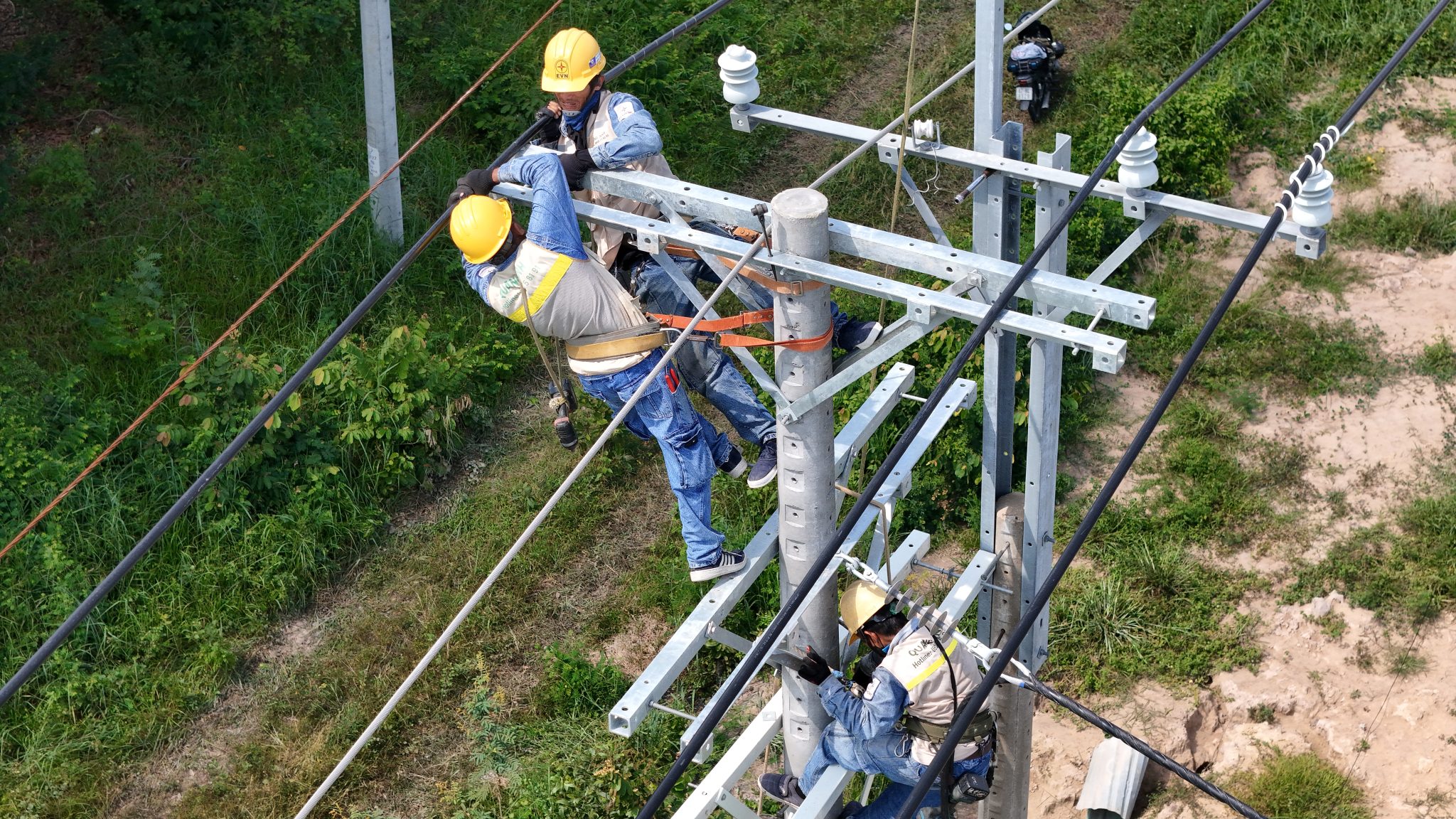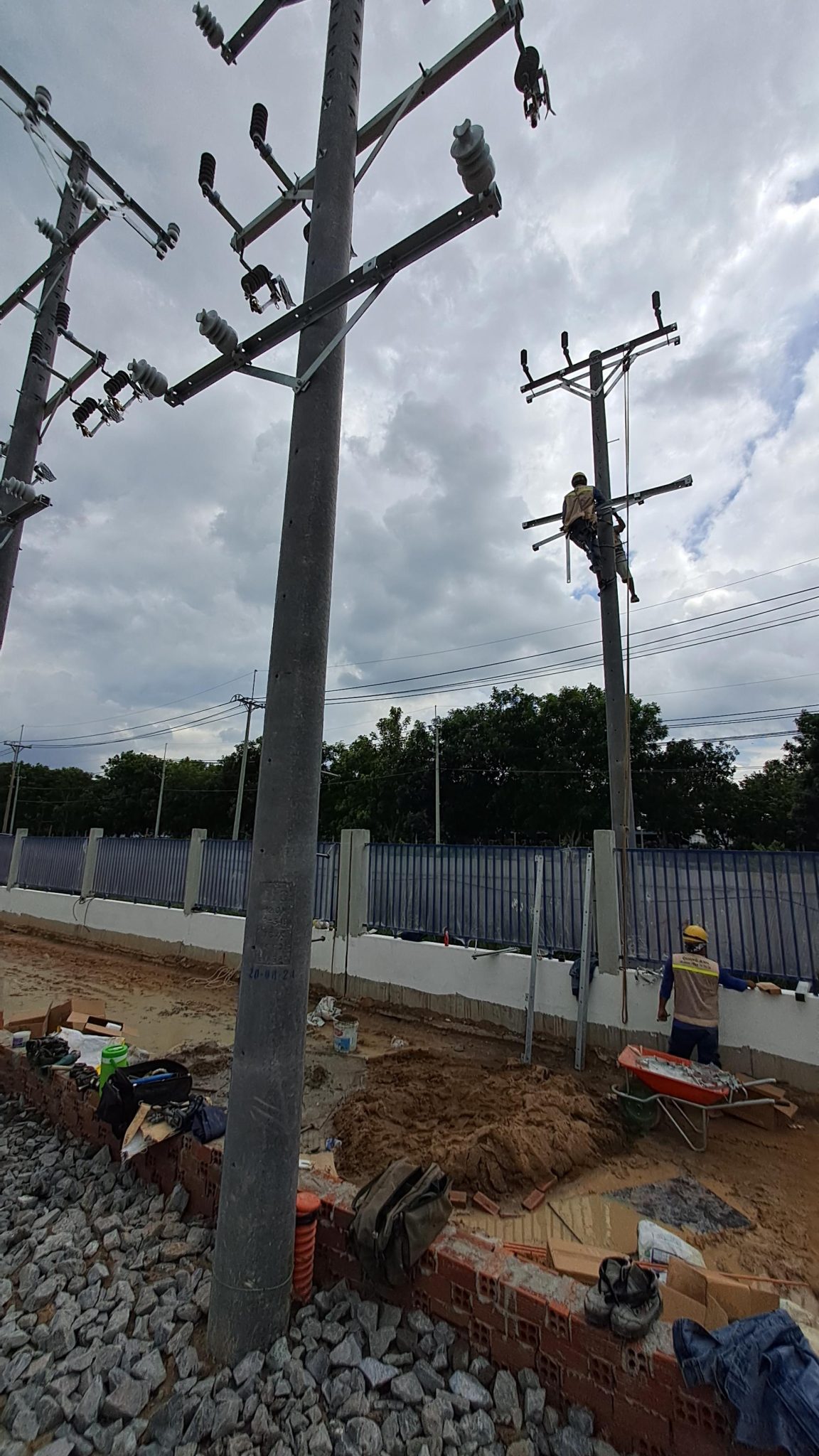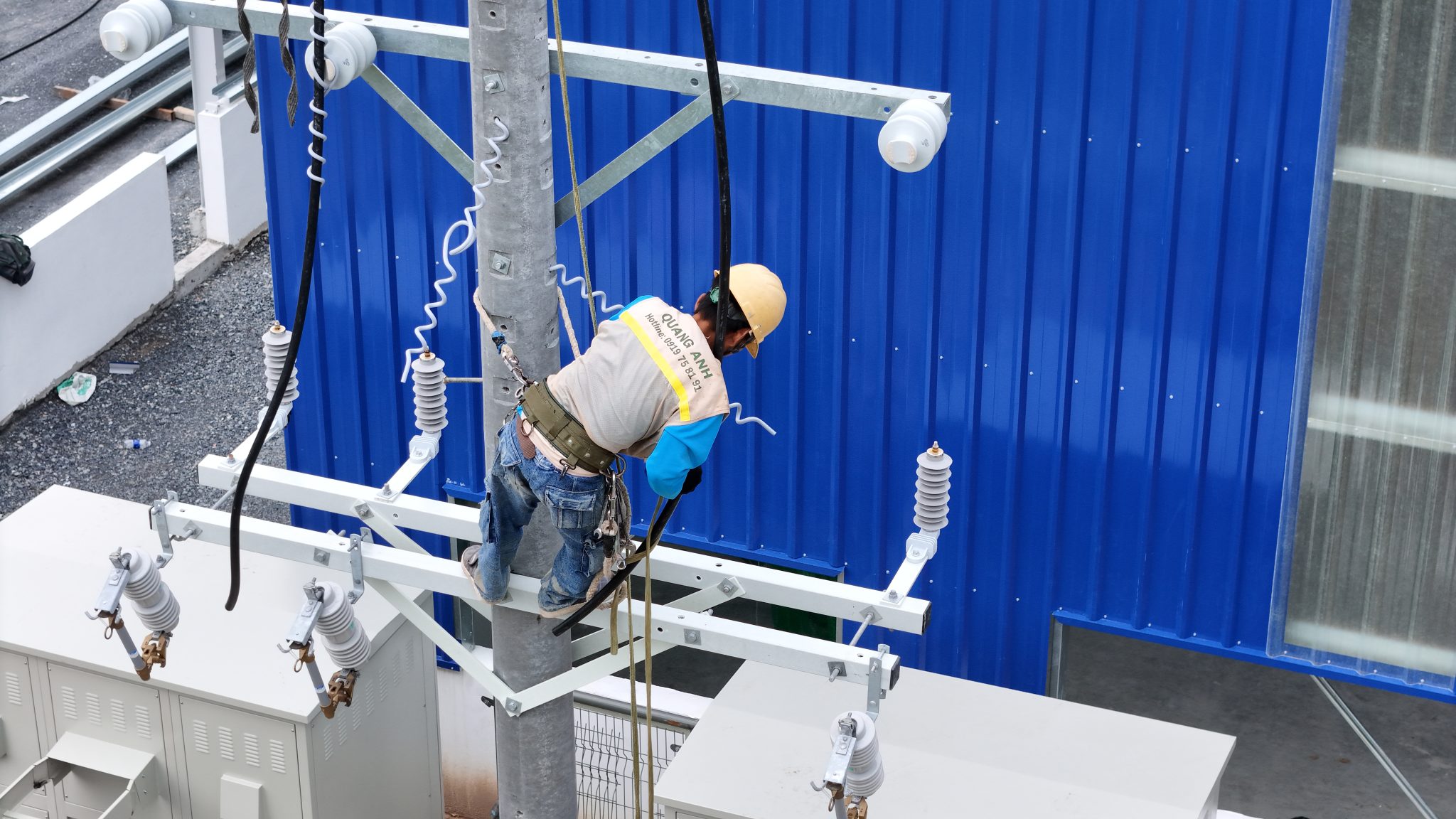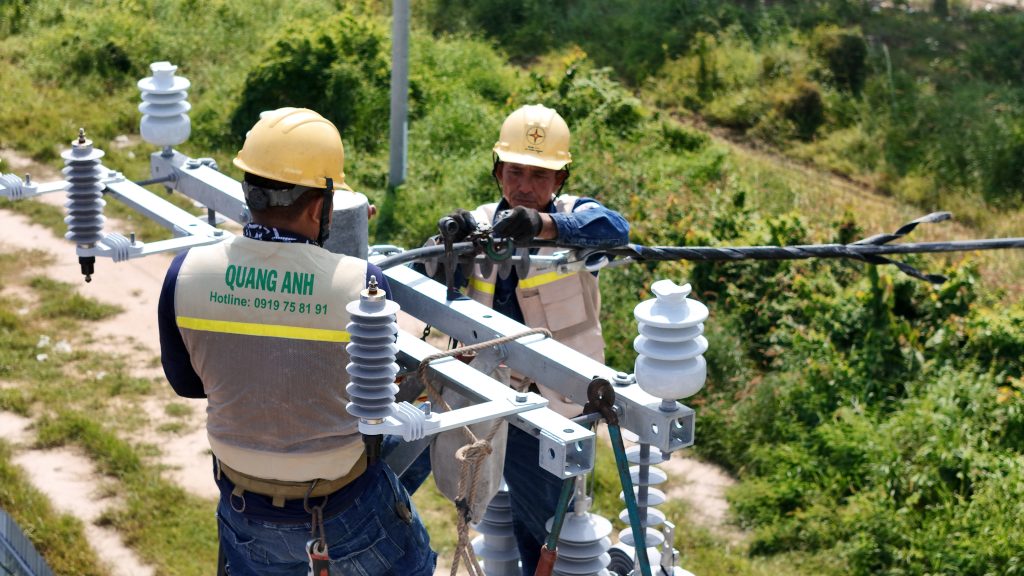News
QuangAnhcons Electric Installation Contractor and Sustainable Development Strategy
Quanganhcons is a major contractor for industrial electrical systems and substations in Vietnam, providing EPC services for medium and low voltage grids and underground electrical systems using advanced technologies such as robotic drilling.
Service Scope and Technical Capability in Industrial Electrical Construction
QuangAnhcons electric installation contractor offers industrial electricity EPC services from 35 kV substations to underground and rooftop solar electrical systems. They are capable of executing turnkey industrial electrical systems and managing medium to low voltage lines both above and below ground. Employing advanced construction technologies like robotic drilling and trenchless methods, QuangAnhcons ensures progress and quality in every project.
Service scope and technical capability are key factors that help technical service providers gain trust and success in the construction and energy market. Particularly for industrial electricity EPC projects, a contractor must ensure services from design to construction, operation, and maintenance.
The service scope of a technical enterprise includes activities such as design consulting, electrical system installation, medium voltage line management, and provision of advanced electrical system construction solutions. Technical capability is paramount, from the quality of personnel to necessary professional certifications.
- Definition and Classification
- The service scope in the industrial electrical sector typically includes:
- Technology capability assessment.
- Support in building technology innovation roadmaps.
- Construction of electrical systems from design to maintenance.
- Using advanced construction technologies, such as trenchless robotic drilling methods.
- Technical capability is tied to skilled personnel, standardized management processes, and advanced equipment.
- Legal Standards
- Circular No. 21/2023/TT-BKHCN is a reference document on economic-technical norms for state-budgeted services, playing a crucial role in determining service scope and technical capability.
- Components of Service Scope and Technical Capability Description
- Clear service lists with detailed job descriptions and deliverables.
- Quantifiable criteria for capability: number of engineers, technicians, equipment.
- Technical Capability Evaluation Method
- The evaluation process includes document collection, preliminary and specialized assessments, on-site inspections, and references from previous projects.
- Practical Applications
- Example: In electrical system installation services, specialized design engineers, qualified construction teams, and robust safety management systems are needed.
- Risks and Management Measures
- Risks may arise from unclear scope descriptions, inadequate team capabilities, and poor safety management. Management measures include requiring proof of capability, phase acceptance inspections, and continuous training for construction teams.
Adhering to strict standards, the success of an industrial electricity EPC project depends on maximizing advanced technical capabilities and comprehensive service scope.

Safety Quality Process and Standards
QuangAnhcons electric installation contractor emphasizes strict adherence to safety standards and commits to the highest quality. Their construction process includes stages from design, land reinforcement, to the use of heat-resistant materials, ensuring durability and safety for underground systems. They also publicly share quality certifications like ISO, affirming reputation and reliability.
To ensure quality and safety in construction, applying quality safety processes and standards is essential. The construction quality management process is implemented through stages from quality planning, material inspection, construction supervision to acceptance, handover, and documentation storage. This forms the foundation for maintaining compliance and continuous improvement in quality management.
Quality Management Process
- Quality Planning: Includes setting objectives, determining scope, and applying standards to establish clear inspection plans, assign responsibilities and inspection schedules.
- Material Survey and Inspection: Collect design, construction, and completion documents, along with surveying and collecting quality certificates for materials used.
- Construction Supervision Inspection: Ensure construction process is executed according to approved standards, supervise labor safety, and control construction measures.
- Testing and Inspection: Includes non-destructive tests and sample testing to analyze material quality and components according to technical standards.
- Acceptance and Documentation Storage: Acceptance of both phases and entirety, storage of reports and quality documents as required.
Legal and International Standards
Vietnam applies standard systems like TCVN/QCVN alongside international standards such as ISO to regulate and guide safety, quality criteria. ISO 9001, for instance, is a quality management standard helping construction organizations have control and improvement systems.
Technical and Quality Safety Content
Criteria such as origin, material quality certification, concrete strength, inspection of steel structures and welds, as well as electrical systems are strictly checked according to stipulated safety and quality standards.
Testing and Experimentation Methods
Methods like non-destructive testing (NDT), sample testing, and actual observation play an important role in evaluating and inspecting construction projects.
Roles and Responsibilities
Each party involved, from investors, contractors, inspection units to governmental agencies, has a key role in ensuring the quality and safety of construction projects.
Documentation and Reporting
A complete AQL process requires preparation and maintenance of design documents, inspection records, inspection reports, and detailed acceptance documentation.
Occupational Safety Risk Management
This includes creating safety plans, risk analysis, and detailed preventive measures, training, and equipping personal protective gear for workers.
Supporting Tools and Techniques
Quality management systems like QMS according to ISO, project management software, and BIM tools effectively support construction quality control and design conflict resolution.
Best Practices
Some good practices proposed include detailed quality planning, source inspection, and implementing independent inspections, along with digital documentation storage and regular capacity assessment for manpower.

Advantages of Modern Construction Technology
Quanganhcons utilizes advanced technologies such as AI integration in operation management and trenchless methods for underground cables, helping minimize impact on sites and the surrounding environment. Robotic drilling technology is widely used to ensure industrial electrical projects are implemented optimally and safely.
In the context of modern construction technology development, applying technologies such as 3D printing of buildings, construction automation, and AI project management is increasingly demonstrating clear advantages. One of the most evident benefits is shortening construction timelines through modern construction methods like assembly, precast, and equipment automation, reducing time to complete projects compared to traditional manual methods.
Material quality and control play important roles through component production at factories, such as precast or Acotec panels. These productions help better control surface quality and dimensions, reducing plastering demands and ensuring flatness as well as other technical standards.
In addition, reducing labor costs through automation and lightweight materials, along with prefabrication, has decreased staffing requirements on site, leading to savings in management costs and capital expenses as construction timelines are significantly shortened.
In the realm of sustainable construction, new construction technologies also help reduce waste and environmental impact through the application of 3D printing and material optimization, simultaneously applying recycled materials, recycled concrete, and bioplastics. These technologies not only contribute to sustainable construction but also reduce wasted materials and improve environmental efficiency.
Occupational safety is also enhanced thanks to machine automation and robots, reducing the number of direct workers on construction sites and thereby lowering accident risks. With support from advanced technologies like BIM, AR/VR, and automatic positioning systems, construction not only becomes more accurate but also minimizes design errors.
Practical applications of modern construction technology are diverse, from using building 3D printing for complex design to integrating BIM technology to manage AI projects effectively. These technologies not only improve the construction process but also open new design possibilities with high flexibility.
However, deploying modern technologies requires significant initial investment in machinery and workforce training, along with procedural and technical standard changes, requiring new legal frameworks and construction standards. Logistics and supply chains also need to be addressed to fully exploit the benefits these technologies offer.

Quanganhcons provides superior technical benefits, ensuring quality and progress in energy projects. Their investment in advanced construction technology and high safety standards solidify their competitive position.
Contact QuangAnhcons now via Hotline: +84 9 1975 8191 for comprehensive industrial electrical solutions.
Quanganhcons provides design, construction, and maintenance services for industrial electrical systems, substations up to 35 kV, and renewable energy solutions with the highest quality standards.

 Tiếng Việt
Tiếng Việt 简体中文
简体中文 Deutsch
Deutsch 日本語
日本語 한국어
한국어 ไทย
ไทย Русский
Русский Français
Français
